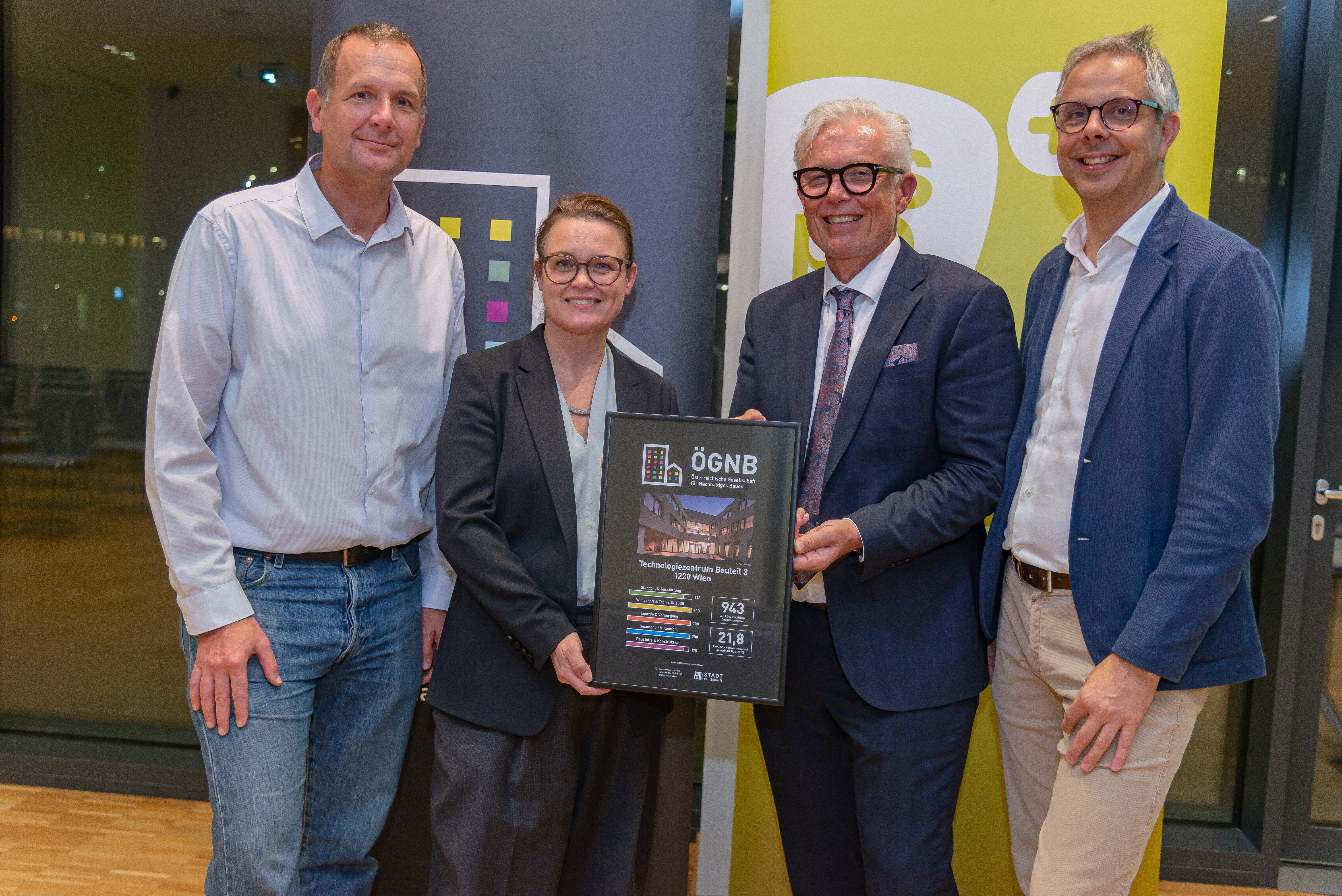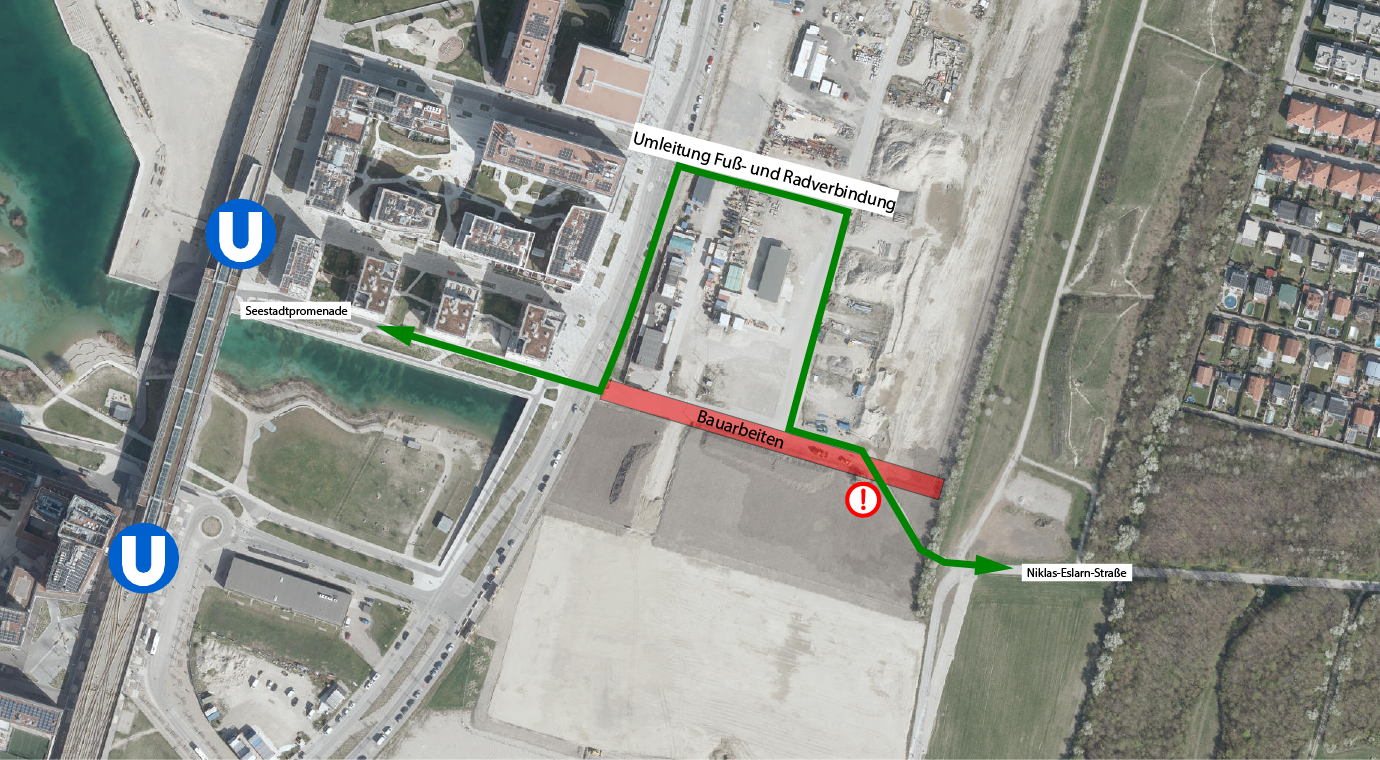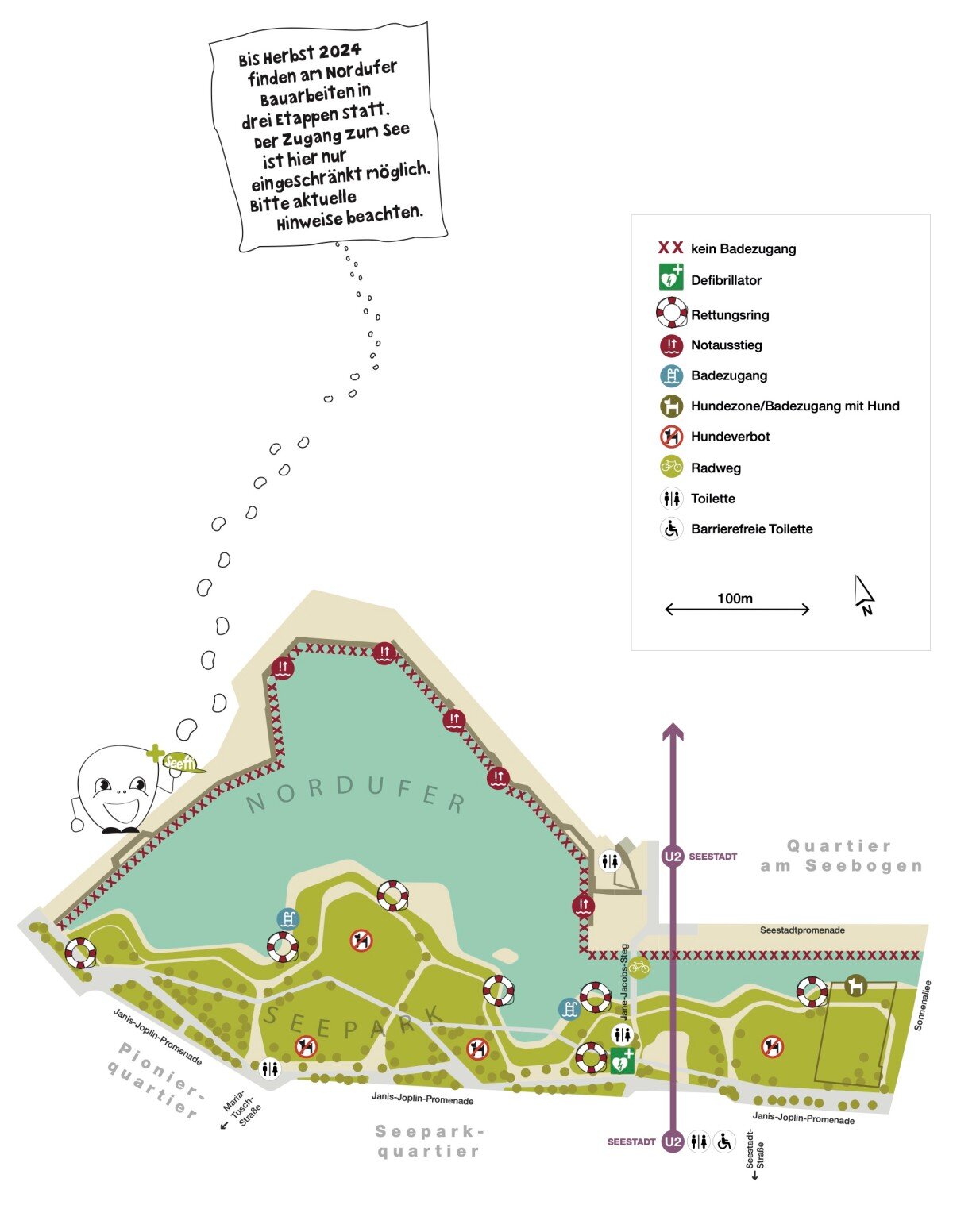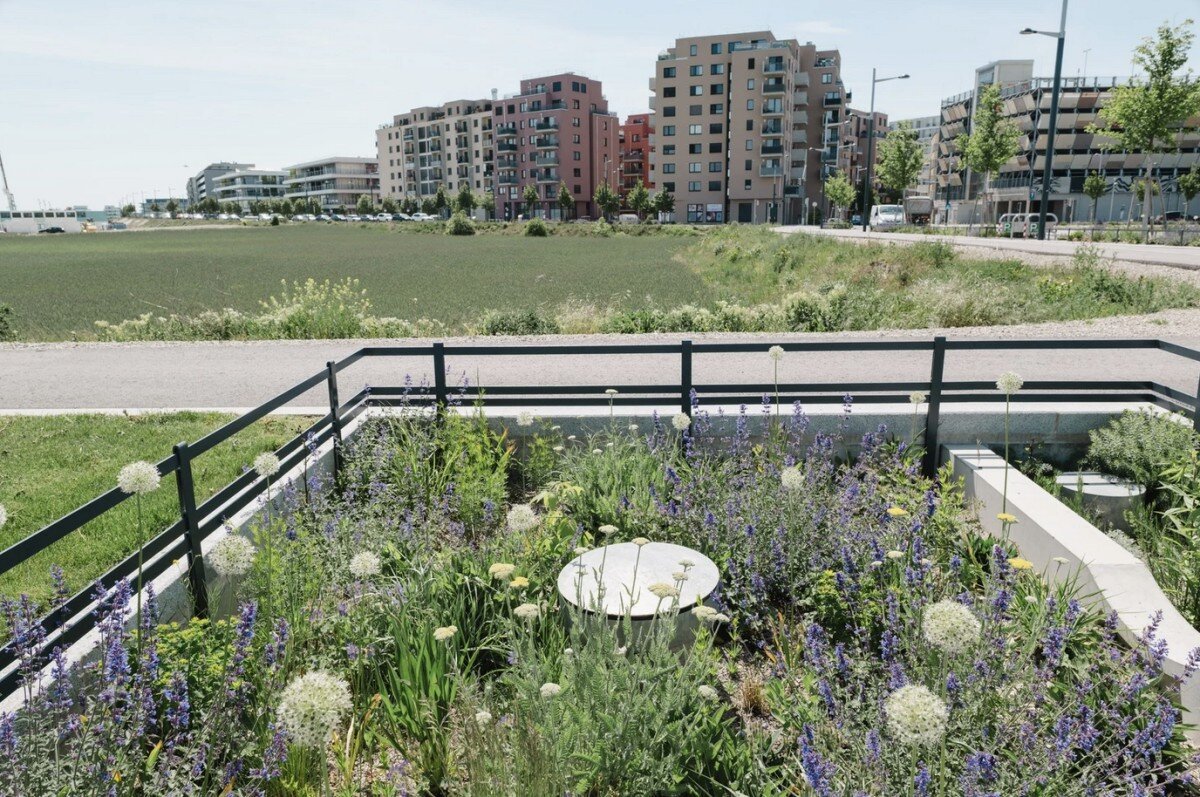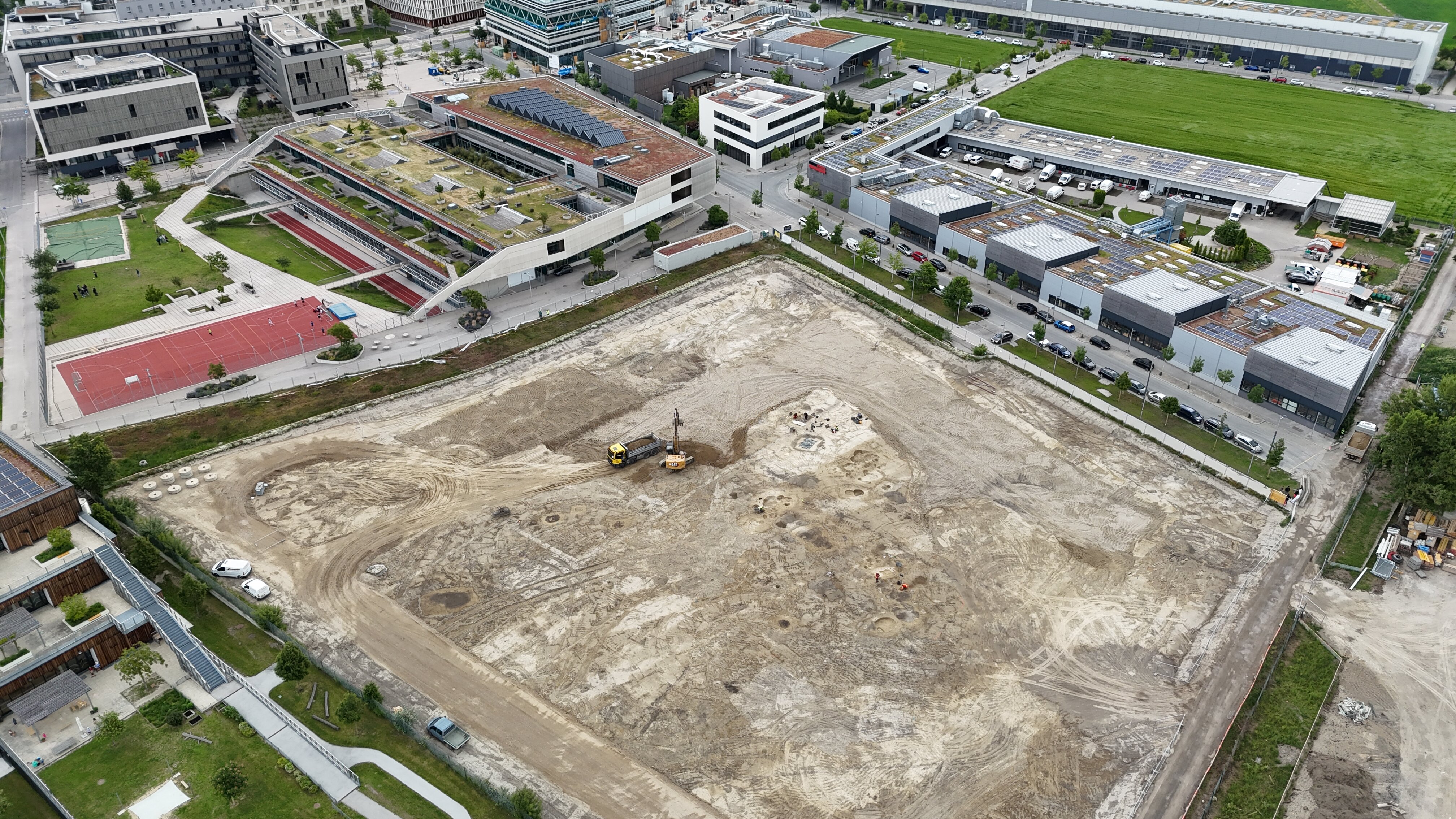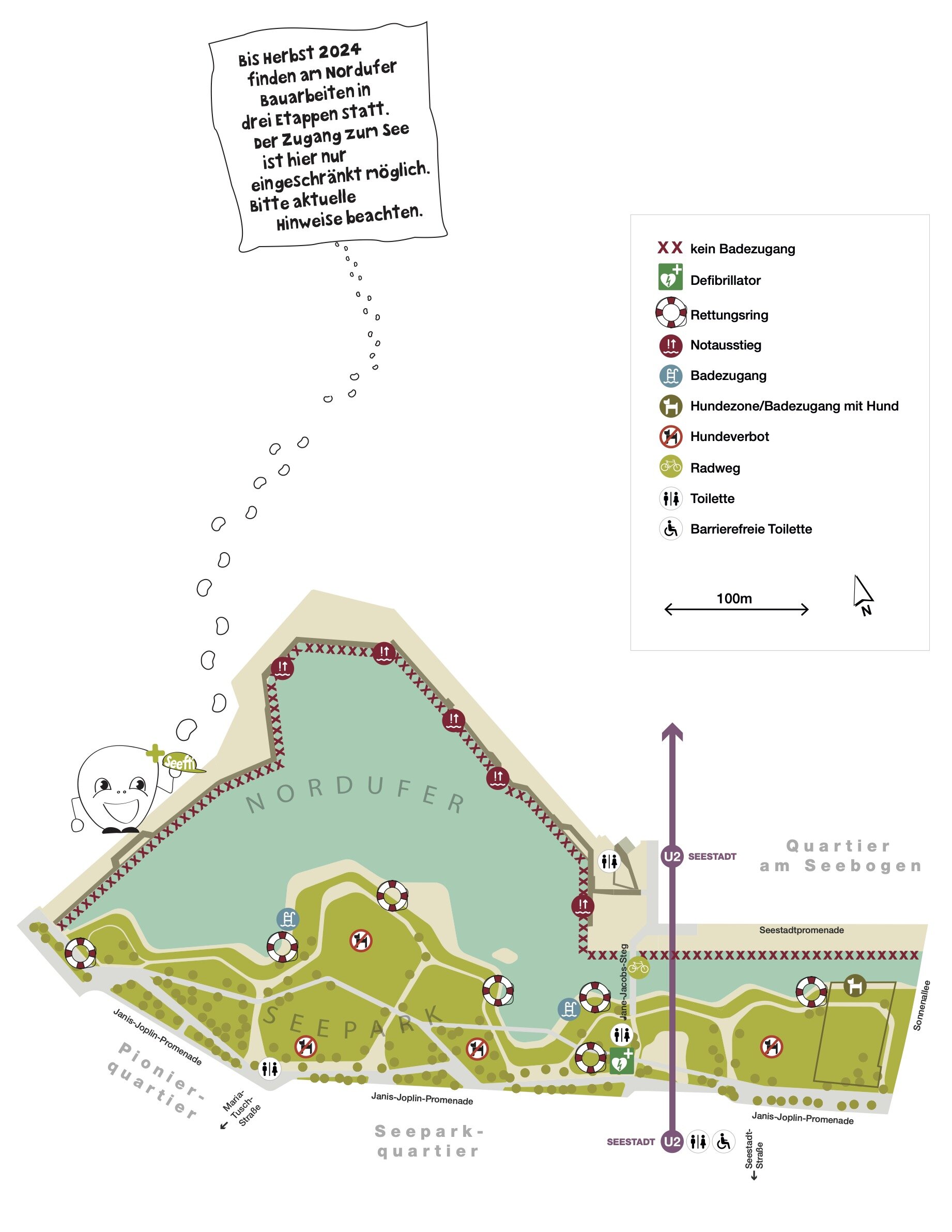Seestadt as a Pioneer of the Sponge City Principle

Urban Responses to Climate Change
Climate change presents cities with enormous challenges: Heat days are increasing, and heavy rainfall events are becoming more frequent. At the same time, urban spaces must remain livable – for current and future generations. Green spaces play a central role in this. In Seestadt, this responsibility is taken seriously: It is a trailblazer in the development and implementation of the sponge city principle.
What Does Sponge City Mean?
Simply explained: The subsoil for trees along streets and paths is designed to function like a sponge. It can store rainwater, provide trees with nutrients and moisture over the long term, and at the same time help prevent flooding. The result: healthier, longer-living trees, cooler street spaces, and less strain on the sewer system.
How the Sponge City Works
A special substrate of gravel and soil is installed in a deep, underground bed. Trees are planted in it. The sponge stores rainwater, which is then available to the roots or slowly seeps into the ground. This benefits several levels at once:
- Trees grow more stably and healthily.
- Street spaces become cooler, as more evaporation is possible.
- Residents benefit from a better microclimate.
- Infrastructure is relieved, as heavy rainfall does not have to be drained mostly through the sewer system, thus causing less damage.
In the rain gardens in Elinor-Ostrom-Park or Hannah-Arendt-Park, water from the adjacent areas is also allowed to collect and slowly seep away. This means even heavy rainfall is efficiently buffered.
Pilot Projects in Seestadt
The sponge city principle was implemented for the first time in Seestadt in the Am Seebogen quarter and is being scientifically evaluated there. In the Seecarré quarter (west of the lake) or – as shown in the video below at Nelson-Mandela-Platz – a further developed system is already in use: New solutions for water inlets make a pre-basin unnecessary. This reduces costs, simplifies implementation, and increases scalability.
Looking to the Future
In total, two-thirds of Seestadt will be realized according to the sponge city principle – especially in the north, where usage allows for it. This demonstrates how climate-resilient urban development can look: innovative, sustainable, and with measurable added value for people and nature.

